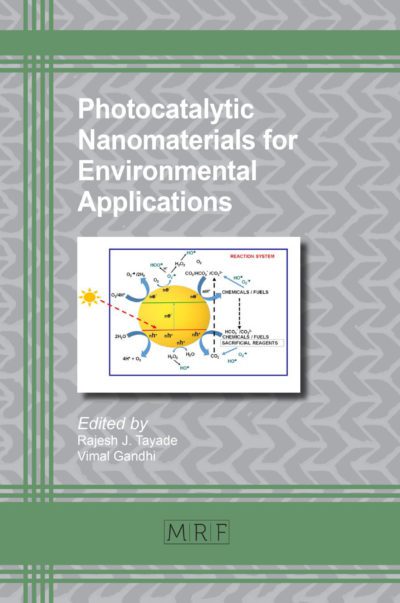S.A. ELHAD KASSIM, M.E. ACHOUR, L.C. COSTA
Abstract. Since the discovery of conductive polymer composite in the 70s; different mixing laws developed from the effective medium theory have been proposed to describe the physical behavior of these materials. Two models based by percolation theory have been applied to predict the AC electrical conductivity of carbon black/epoxy composites. McLachlan and Mamunya models show satisfactory results considering the parameters related to these models as adjustable parameter. These adjusted parameters do not vary significantly as a function of frequency.
Keywords
Carbon Black, AC Electrical Conductivity, Percolation, Nanocomposites
Published online 12/10/2016, 5 pages
Copyright © 2016 by the author(s)
Published under license by Materials Research Forum LLC., Millersville PA, USA
Citation: S.A. ELHAD KASSIM, M.E. ACHOUR, L.C. COSTA, ‘Prediction of the AC electrical conductivity of carbon black filled polymer composites’, Materials Research Proceedings, Vol. 1, pp 114-118, 2016
DOI: https://dx.doi.org/10.21741/9781945291197-29
The article was published as article 29 of the book Dielectric Materials and Applications
References
[1] E.P. Mamunya, V.V. Davydenko, P. Pissis and E.V. Lebedev, “Electrical and thermal conductivity of polymers filled with metal powders” Eur. Polym. J. vol. 38, pp. 1887-1897, 2002. https://dx.doi.org/10.1016/S0014-3057(02)00064-2
[2] M. Rahaman, T.K. Chaki and D. Khastgir, “Modeling of DC conductivity for ethylene vinyl acetate (EVA)/polyaniline conductive composites prepared through insitu polymerization of aniline in EVA matrix” compos. Sci. Technol. vol. 72, pp. 1575-1580, 2012.
[3] S. Shang, L. Liang, X. Yang and Y. Wei, “Polymethylmethacrylate-carbon nanotubes composites prepared by microemulsion polymerization for gas sensor” Compos. Sci. Technol. vol. 69, pp. 1156-1165, 2009. https://dx.doi.org/10.1016/j.compscitech.2009.02.013
[4] L. Jiongxin, K.S. Moon, B. K. Kim and C. P. Wong, “High dielectric constant polyaniline/epoxy composites via insitu polymerization for embedded capacitor applications”. Polym. Vol. 48, pp. 1510-1516, 2007. https://dx.doi.org/10.1016/j.polymer.2007.01.057
[5] S. A. Elhad Kassim, M. E. Achour, L.C. Costa and F. Lahjomri, “Modelling the DC electrical conductivity of polymer/carbon black composites” J. Electrost. Vol. 72, pp. 187-191, 2014. https://dx.doi.org/10.1016/j.elstat.2014.02.002
[6] S. A. Elhad Kassim, M. E. Achour, L.C. Costa and F. Lahjomri, “Prediction of the DC electrical conductivity of carbon black filled polymer composites” Polym. Bull. Vol. 72, pp. 2561-2571, 2015. https://dx.doi.org/10.1007/s00289-015-1421-5
[7] M.E. Achour, Electromagnetic properties of carbon black filled epoxy polymer composites, in: C. Brosseau (Ed.), Prospects in Filled Polymers Engineering: Mesostructure, Elasticity Network, and Macroscopic Properties, Transworld Research Network, Kerala, 2008, pp. 129-174.
[8] D.S. McLachlan, “Analytical Functions for the dc and ac Conductivity of Conductor-Insulator Composites” J. Electroceram. Vol. 5, pp. 93-110, 2000. https://dx.doi.org/10.1023/A:1009954017351
[9] D.S. McLachlan, “A quantitative analysis of the volume fraction dependence of the resistivity of cermets using a general effective media equation” J. Appl. Phys. Vol. 68 pp. 347114-347119, 1990. https://dx.doi.org/10.1063/1.347114
[10] E.P. Mamunya, V.F. Shumskii, E.V. Lebedev, “Rheological properties and electric conductivity of carbon black-filled polyethylene and polypropylene” Polym. Sci. vol. 36, pp. 835-839, 1994.
[11] E.P. Mamunya, V.V. Davidenko, E.V. Lebedev, “Effect of polymer-filler interface interactions on percolation conductivity of thermoplastics filled with carbon black” Compos. Interface, vol. 4, pp. 169-176, 1997. https://dx.doi.org/10.1163/156855497X00145














